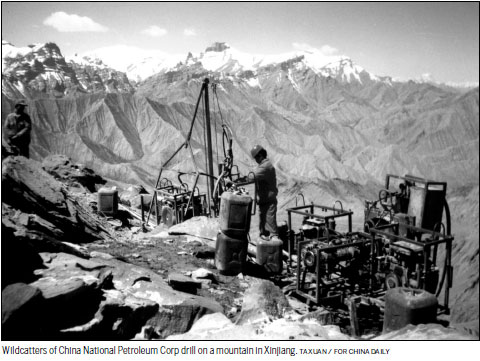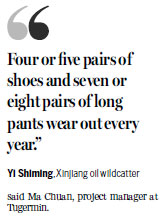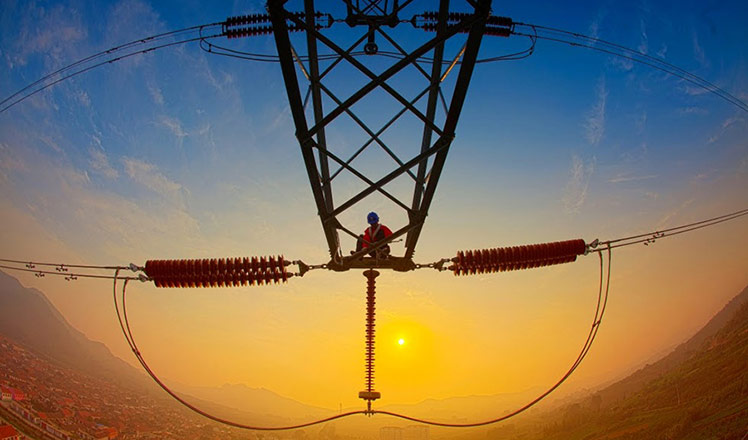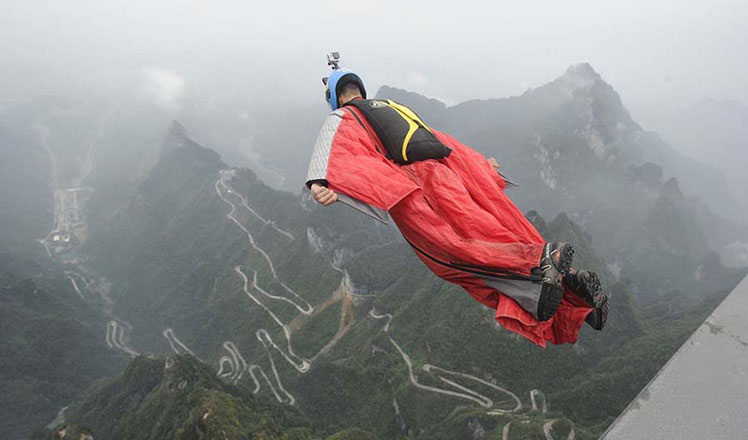Wildcatters drill for oil in far west
Updated: 2016-10-14 12:16
By inhua in Urumqi(China Daily USA)
|
|||||||||

Yi Shiming's job is as rigorous as it is rewarding. As a wildcatter, a person who sinks exploratory oil wells, Yi is among hundreds of workers tasked with looking for black gold in China's far west.
Originally from Chongqing municipality, about 4,000 km from Xinjiang Uygur autonomous region, Yi, 48, is a contract worker for Chuanqing Geophysical Prospecting, which belongs to China National Petroleum Corp.
He has worked in Xinjiang's Tarim Basin for more than one-third of his life.
He leads an 11-member team, currently based in Tugermin, a 200-sq-km area that sits along the Kuqa Depression, where several oil deposits have been explored, including Kela-2, China's No 2 natural gas field, a major supplier to the West-East natural gas pipeline.
The pipeline began to transport gas from resource-rich Xinjiang to the country's east in 2004.
Along the Kuqa Belt, at least two more large oilfields have been found in the past decade: Dina-2 was found in 2001, with deposits of 175 billion cubic meters of gas; and Keshen, found in 2008, boasts deposits of 476 billion cubic meters. Both feed gas into the West-East pipeline.

"My job is to conduct an 'X-ray' of the mountains. We help uncover where the oil and gas deposits are," Yi said.
Yi and his colleagues drill along exploration lines drawn by geologists who use seismic imaging to understand the geological structure of mountains to locate new oil fields.
There are 15 straight lines in Tugermin. Yi and his colleagues need to sink 9,633 wells, from 10 to 40 meters deep, along the lines. The wells are 40 meters apart from each other and the margin of error cannot exceed 1 meter.
The wildcatters began this task in May, and their work must be completed by this month, when the winter weather will start to make work difficult, Yi said. After Tugermin, they will move on to another area along the Kuqa Belt.
Challenging environment
Though drilling is deemed an entry-level position, wildcatters have one of the most important jobs.
Yi and his team must be hardy and strong.
Everyday, Yi and his colleagues have to carry heavy drilling machines, tools and barrels of oil and water across the steep mountains.
A well takes about three hours to drill, but moving from one well to another is the most physically demanding.
In Tugermin, there are more than 200 mountains that the team must climb.
"In my dreams, I am still carrying heavy things," said Cai Ziyou, 30.
"For each one of us, four or five pairs of shoes and seven or eight pairs of long pants wear out every year," Yi said.
Though pay for the company's management level is cut due to low oil prices, workers like Yi are not affected because they work in harsh conditions, said Ma Chuan, project manager at Tugermin.
Prospecting
Oil and gas resources in Xinjiang account for about 20 percent of the national total, sources at Tarim oilfield said.
By last month, Tarim oilfield had supplied 170 billion cubic meters of gas, equaling 200 million tons of coal, to the West-East pipeline.
The gas is used by 400 million residents and more than 3,000 enterprises in more than 120 medium and large cities across 15 provinces and municipalities.
Finding more oil deposits is key to sustaining the pipeline in the future and to the nation's energy safety, Ma said.
"There is a great chance of finding oil in Tugermin, otherwise we would not have invested so heavily here," he said.
- Hollande, Merkel, Putin discuss how to implement Minsk peace deal
- Pentagon vows to respond to attempted missile attacks at US destroyer near Yemen
- NASA to invite private companies to install modules on space station
- Trump accused of inappropriate touching by two women
- White House denounces terror attacks in Afghanistan
- Republican voters frown on party establishment's criticism of Donald Trump

 Birthday celebration held for panda cubs at Toronto Zoo
Birthday celebration held for panda cubs at Toronto Zoo
 China's top 10 enterprises by revenue in 2015
China's top 10 enterprises by revenue in 2015
 Robots, 3D printed food big hit at Shenzhen Maker Week
Robots, 3D printed food big hit at Shenzhen Maker Week
 Flying over the mountains in wingsuit in Zhangjiajie
Flying over the mountains in wingsuit in Zhangjiajie
 Ten photos from around China: Oct 7-13
Ten photos from around China: Oct 7-13
 Superheroes make surprise visit to children's hospital
Superheroes make surprise visit to children's hospital
 Female soldiers take training in Hainan
Female soldiers take training in Hainan
 Premier Li vows anew to ease market access
Premier Li vows anew to ease market access
Most Viewed
Editor's Picks

|

|

|

|

|

|
Today's Top News
Trump outlines anti-terror plan, proposing extreme vetting for immigrants
Phelps puts spotlight on cupping
US launches airstrikes against IS targets in Libya's Sirte
Ministry slams US-Korean THAAD deployment
Two police officers shot at protest in Dallas
Abe's blame game reveals his policies failing to get results
Ending wildlife trafficking must be policy priority in Asia
Effects of supply-side reform take time to be seen
US Weekly

|

|









